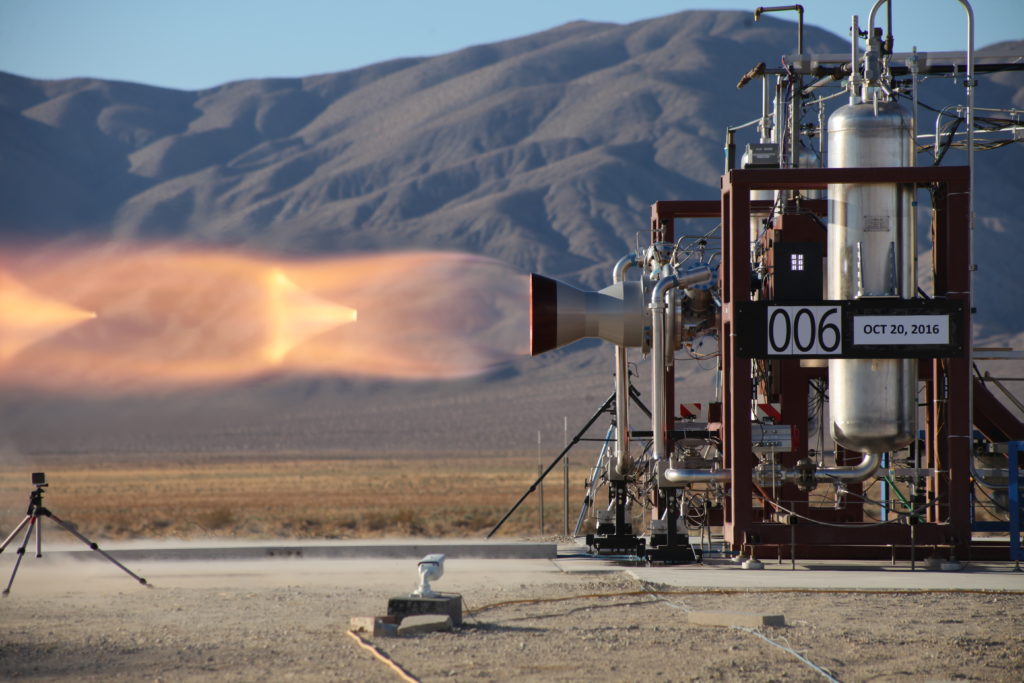Recently, Aerojet Rocketdyne conducted a series of hot-fire tests with two launch abort engines in the Mojave Desert in California. The launch abort engines will be part of Boeing’s Starliner service module propulsion system, which provides launch abort capability on the pad and during ascent. Starliner’s four 40,000-pound thrust launch abort engines will only be used in abort. Watch video from the tests here.
Month: October 2016
Color Your Place in Commercial Crew
Halloween brings out plenty of vampires, mummies and monsters, but there is also room for engineers, astronauts and rocket scientists. Color in the Commercial Crew Kids who are dressed up as a launch controller, scientist, doctor and engineer for Halloween. When you finish your drawing, take a pic of it and share it with us on Twitter using @Commercial_Crew or on Facebook using @NASACommercialCrewProgram. Happy Halloween!
ICYMI: President Touts Advances in Commercial Crew Spacecraft
 In case you missed it, President Barack Obama talked Thursday, Oct. 13, with the two companies developing the next generation of American spacecraft designed to take NASA astronauts into orbit and to the International Space Station.
In case you missed it, President Barack Obama talked Thursday, Oct. 13, with the two companies developing the next generation of American spacecraft designed to take NASA astronauts into orbit and to the International Space Station.
Touring exhibits by Boeing and SpaceX during the Frontiers Conference at Carnegie Mellon University and University of Pittsburgh in Pittsburgh, Obama discussed the immediate future of space exploration and touted the advances made in the public-private partnerships between the companies and NASA’s Commercial Crew Program. Because the new spacecraft will enable a larger space station crew and more research time in space, they are seen as critical avenues to help scientists and astronauts explore the best methods to send crews into deep space and eventually to Mars.
The goal is “to lead humanity farther out into the final frontier of space,” the president said. “Not just to visit, but to stay.”
Obama even took the controls of a simulator designed to mimic the flight of Boeing’s CST-100 Starliner spacecraft. He conducted a Starliner docking maneuver similar to the one astronauts will actually fly in the future during crew rotation missions to the orbiting laboratory.
“Your ride is here,” Obama said after completing the exercise.
“I’m not sure who had more fun today – the president or me,” said NASA astronaut Serena Aunon-Chancellor, who helped demonstrate how the simulator worked. “He was a natural docking the Starliner to the space station!”
The president also inspected SpaceX’s Crew Dragon design up-close and talked at length with Aunon-Chancellor and a company official.
“You almost want to get in and take off, don’t you?” the president said.
“While visiting Dragon, we discussed the future of human spaceflight and how important it is to safely and reliably get our crew to the station in low-Earth orbit so NASA can focus on human exploration in deep space,” Aunon-Chancellor said. “We’re excited about the progress our partners are making and look forward to flying with them soon.” Photo credit: Michael Henninger/ Pittsburgh Post-Gazette
Starliner Propulsion Hardware Arrives, Testing Begins
Boeing and Aerojet Rocketdyne have begun a series of developmental hot-fires tests with two launch abort engines similar to the ones that will be part of Boeing’s Starliner service module. The engines, designed to maximize thrust build-up, while minimizing overshoot during start up, will be fired between half a second and 3 seconds each during the test campaign. If the Starliner’s four launch abort engines were used during an abort scenario, they would fire between 3 and 5.5 seconds, with enough thrust to get the spacecraft and its crew away from the rocket, before splashing down in the ocean under parachutes.
Recently, Aerojet Rocketdyne also completed delivery of the first set of hardware for Starliner’s service module propulsion system.
The Starliner is under development in collaboration with NASA’s Commercial Crew Program for crew missions to the International Space Station.
New Configuration for Atlas V/Starliner
 United Launch Alliance and Boeing unveiled an updated configuration for the Atlas V rockets that will launch the CST-100 Starliner spacecraft into orbit. The new design adds an aeroskirt to the rocket to enhance the aerodynamic stability of the stack as it climbs through Earth’s atmosphere on the way to space.
United Launch Alliance and Boeing unveiled an updated configuration for the Atlas V rockets that will launch the CST-100 Starliner spacecraft into orbit. The new design adds an aeroskirt to the rocket to enhance the aerodynamic stability of the stack as it climbs through Earth’s atmosphere on the way to space.
Teams equipped a 12-foot long, 600-pound Atlas V/Starliner scale model with more than 570 sensors and tested the aeroskirt design three times in wind tunnels at NASA’s Ames Research Center.
NASA’s Commercial Crew Program has partnered with Boeing to build and operate the Starliner system, including ULA’s Atlas V rocket, for missions taking astronauts to and from the International Space Station. NASA, Boeing and ULA have worked together closely throughout the development of the Starliner system. Boeing is working toward an uncrewed flight test and then a flight test carrying a crew. After that, operational missions rotating space station crew members can begin. For more details on the design modifications, see ULA’s news release posted this morning at http://go.nasa.gov/2dPilAJ Artist concept and photos by United Launch Alliance
NASA also partnered with SpaceX on a separate spacecraft launch system capable of flying astronauts to and from the space station.







